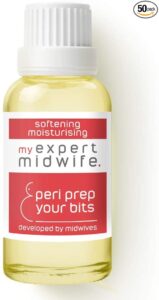The perineum is the area of soft tissue between the anus and the vagina. This can be damaged during the birth of your baby.
Symptoms:
-
A burning sensation in the perineum area, as well as sometimes a lower abdominal pain as well.
-
Genital pain, anal pain, pelvic pain, and lower back pain can all be associated with damage to the perineum.
-
There is often an increase in pain described when sitting.
-
Pain during intercourse, during orgasm, and after sex can also occur.
-
Scar tissue formation.
Causes:
-
The perineum is the area between your vagina and rectum, it stretches and may tear during labour and vaginal birth. This means that this area is often quite sore after giving birth.
-
The perineum may be more sore if you have an episiotomy (his is a cut made at the opening of the vagina to help let your baby out).
-
Symptoms tend to settle down after 2-3 weeks but the formation of scar tissue can cause further issues if it is not addressed.
Here is what the evidence says about the treatment options:
Kegel exercises – evidence is good for the use of this type of exercise before and after birth. Studies have shown that they can help with urinary incontinence as well as pain / recovery after birth. Here is a great video explaining how to do Kegel exercises.
Pelvic floor exercises are always incorporated into Pilates classes, along with strength and conditioning for the whole body. Have a look at our Top 5 online Pilates programmes here.
Yoga – there is evidence to suggest that doing yoga throughout your pregnancy can reduce the chances of damage to the perineum during labour. This is a recent study which found that the subjects who followed regular antenatal exercises, including yoga, had significantly lower rates of caesarean section, lower weight gain, higher new-born infant weight, lower pain and overall discomfort during labour, lower back pain throughout pregnancy, and earlier post-partum recovery compared to those who did no specific exercises or only walked during pregnancy.
There are lots of Online Yoga programmes available, have a look at our Top 5 here (and why we love them)! You can also read our blog on how yoga can help in other ways.

Cold therapy – We know that cold can help to reduce pain and inflammation. Do not do this more than three times a day however, as this can reduce blood flow to the area and slow healing. You could use ice wrapped in a towel or you can buy specific cold packs for perineum pain like these:

Doughnut cushions – a lot of studies have been carried out in order to check the effects of doughnut cushions on pressure relief. The studies are always in their favour, so if pain is your main issue then something like this might help to take some of the pressure off the affected area. Various types of cushions are on the market, have a look at our Top 5 pressure relief cushions HERE.

Heat – warm baths have been recommended to encourage healing following tears / cuts in this area. Heat helps to encourage blood flow to the affected area and also helps to keep it clean.
Lavender – This very recent study showed that the use of Lavender (in any form), following the birth of a baby, had a significant effect on pain relief and healing of episiotomy wounds. We would recommend using a lavender essential oil such as THIS one by Hebeso. This can be added to a bath for a heating effect also.
Perineal scar massage – We know from previous research that massage can really help with scar tissue in terms of pain, thickness, appearance and colour.
If you have had an episiotomy or a perineal tear, the scar tissue around the area can become tight and and less flexible. This may cause discomfort during intercourse and during physical activity. By massaging the perineal area you can reduce / mobilise the scar tissue. It is recommended that you wait until you have had your postnatal check, (usually at six weeks), to start this massage. Your healthcare provider will check that your stitches or scar have fully healed. HERE is a great video explaining how you can help with your own scar tissue following episiotomy or tear in the perineal area.
A great massage oil that has been developed specifically for perineal scar massage is this one by My Expert Midwife.
What symptoms to watch for following damage to the perineum:
-
your stitches or the area affected get more painful (rather than less as time passes)
-
there’s smelly discharge from the area
-
there’s red, swollen skin around the cut (incision) or tear, try to look at the area using a mirror once a day initially.
-
You notice a lump / bulge in the vagina (can be a sign of prolapse)
-
You have issues with incontinence
If you suffer with any of these symptoms then tell your healthcare provider right away.



